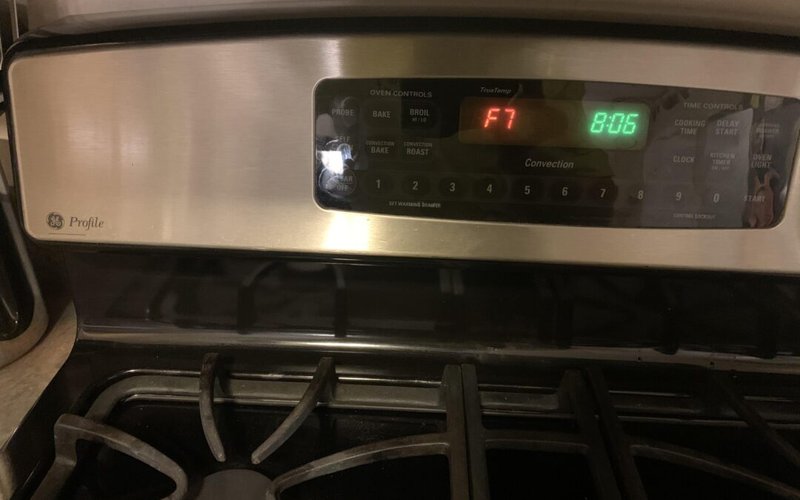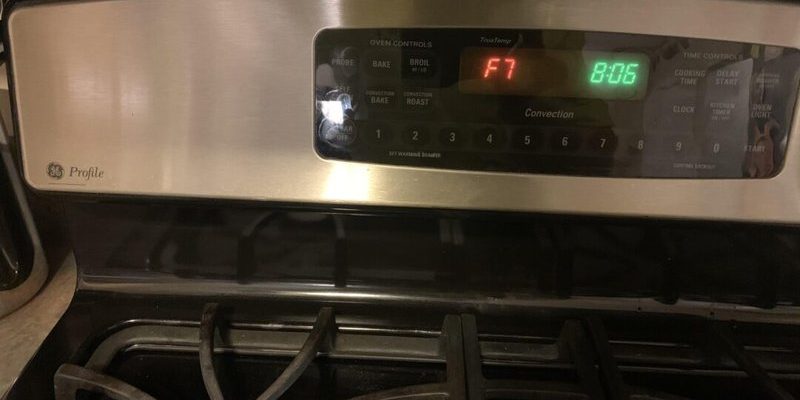
Understanding what causes this error can feel like decoding a secret message. However, it’s not as complicated as it seems. This error typically means that something’s amiss with your oven’s ability to detect temperature, much like trying to watch TV with a broken remote. Let’s break it down step by step so you can get back to cooking without a hiccup.
Understanding the E2 Error Code
First things first—what exactly is an E2 error code? In the world of GE ovens and ranges, this code indicates a problem with the temperature sensor circuit, also known as the oven sensor. Think of the sensor as your oven’s thermometer, constantly checking the heat inside to make sure your food is cooked just right. If this little device hiccups, it can throw your whole baking process off balance.
Consider the sensor as a scout on a mission, constantly feeding information back to the main control board of your oven. When it can’t send correct signals due to a malfunction, the oven doesn’t know how hot or cold it is inside. This is where the E2 code pops up, alerting you that the scout, or sensor, needs attention. It’s crucial to address this issue, as continuing to cook with a faulty sensor can lead to unevenly cooked meals or even bigger problems down the line.
So, what might be causing your pizza night to be interrupted by this error? The usual culprits include a faulty sensor itself, corroded or loose wiring, or a malfunctioning electronic control board. Understanding these components can help you narrow down the issue and decide on the best course of action without unnecessary stress.
Faulty Temperature Sensor
One common cause of the E2 error is a faulty temperature sensor. As the name suggests, the temperature sensor monitors the oven’s internal heat and communicates it to the control board. When this sensor fails, it’s like trying to cook with an unreliable recipe that leaves you guessing the next step. A malfunctioning sensor may give inaccurate readings, causing the oven to overheat or underheat.
Over time, the sensor can wear out due to regular use, much like how a favorite baseball cap gets worn out after many summer innings. Symptoms of a failing sensor include fluctuating temperatures or the unit taking longer than usual to heat up. If you notice these signs along with the E2 error code, it’s likely that the sensor is in need of replacement.
Replacing the sensor isn’t as daunting as it sounds. It involves removing the old sensor and installing a new one, which generally requires a bit of unscrewing and careful handling of wiring. Always ensure the oven is unplugged before attempting any repairs to avoid any electrical mishaps. Consulting your oven’s manual or a professional may also be wise if you’re unsure about the process.
Wiring Issues
Another sneaky culprit leading to the E2 error is wiring issues. You might be surprised at how often faulty or corroded wires are the silent saboteurs behind appliance errors. Imagine wearing a pair of headphones with a broken wire—you won’t get clear sound, will you? Similarly, if the wires connecting the sensor to the control board are damaged, the signals they carry get lost or distorted, triggering the E2 error.
Wiring problems can arise from normal wear and tear, accidental yanks while moving the oven, or even moisture damage. If you suspect that the wiring is at fault, a visual inspection can be a good first step. Look for any obvious signs of damage or corrosion on the wires. However, working with wires requires caution. If you’re not confident in handling electrical components, it’s best to seek professional help.
Keeping your oven’s wiring in good condition can prevent many headaches down the line. Avoid pulling on wires directly, keep the area behind the oven clean and dry, and routinely check for any signs of wear. These simple steps can help maintain good communication between your oven’s sensor and control board, keeping that E2 error at bay.
Electronic Control Board Issues
Lastly, let’s talk about the electronic control board, the brain of your oven. If the E2 error persists even after checking the sensor and wiring, the control board itself might be the problem. Although less common, issues with this component can be compared to having a faulty conductor in an orchestra—no matter how talented the musicians (or functional the parts), things won’t sound right without proper guidance.
The control board processes all the information from your oven’s components and makes adjustments as needed. If it’s malfunctioning, it might not interpret the signals correctly, leading to errors like E2. Signs of a failing control board can include random error codes, unresponsive buttons, or the oven not maintaining the set temperature.
Replacing or repairing a control board is more complex than swapping out a sensor. It often requires expertise in electronics and should be done by a qualified professional to avoid further complications. If you find yourself in this situation, reaching out to a professional repair service might be the best route forward.
Preventing the E2 Error Code
Prevention is always better than cure, right? The same goes for maintaining your GE oven to avoid encountering the E2 error code. Regular maintenance of your oven can significantly reduce the chances of facing sensor, wiring, or control board issues. Think of it like routine check-ups for your car; it keeps everything running smoothly and prevents minor issues from snowballing into major problems.
Start by ensuring your oven is kept clean and free of moisture, which can help prevent corrosion in wires and other components. Regularly checking the condition of your oven’s parts, such as the temperature sensor and wiring, can also catch potential issues early. If your oven’s manuals offer specific maintenance tips, following these can also extend your appliance’s lifespan.
In conclusion, while seeing an E2 error code can be frustrating, it’s not the end of the world—or your baking endeavors. By understanding the possible culprits, like a faulty sensor, wiring issues, or a problematic control board, you can troubleshoot the issue effectively. Whether you choose to tackle the problem yourself or call in a pro, you’ll soon have your oven back in action, ready to perfect your culinary creations once more.
